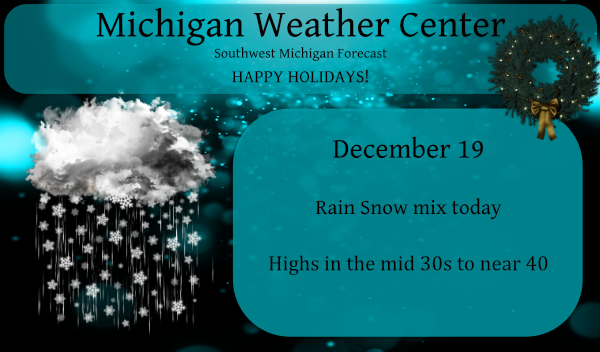Winter Solstice
This year the winter solstice is on Monday the 21st at 5:02 AM. At that time Earth’s poles has its maximum tilt away from the Sun. The solstice happens at the same instant for all of us, everywhere on Earth. It’s when the sun on our sky’s dome reaches its farthest southward point for the year. At this solstice, the Northern Hemisphere has its shortest day and longest night of the year. For us in the northern hemisphere this is the start of the calendar winter. This is not to be confused with meteorological winter witch we have now been in for some 20 odd days. As some may have noticed that we have already had our earliest sun set you may wonder why that has already happened if the 21st is indeed the shortest day of the year.
The key to understanding the earliest sunset is not to focus on the time of sunset or sunrise. The key is to focus on what is called true solar noon – the time of day that the sun reaches its highest point in its journey across your sky.
In early December, true solar noon comes nearly 10 minutes earlier by the clock than it does at the solstice around December 21. With true noon coming later on the solstice, so will the sunrise and sunset times.
It’s this discrepancy between clock time and sun time that causes the Northern Hemisphere’s earliest sunset and the Southern Hemisphere’s earliest sunrise to precede the December solstice.
The discrepancy occurs primarily because of the tilt of the Earth’s axis. A secondary but another contributing factor to this discrepancy between clock noon and sun noon comes from the Earth’s elliptical – oblong – orbit around the sun. The Earth’s orbit is not a perfect circle, and when we’re closest to the sun, our world moves fastest in orbit. Our closest point to the sun – or perihelion – comes in early January. So we are moving fastest in orbit around now, slightly faster than our average speed of about 18.5 miles per second. The discrepancy between sun time and clock time is greater around the December solstice than the June solstice because we’re nearer the sun at this time of year.
The precise date of the earliest sunset depends on your latitude. At mid-northern latitudes, it comes in early December each year. At northern temperate latitudes farther north – such as in Canada and Alaska – the year’s earliest sunset comes around mid-December. Close to the Arctic Circle, the earliest sunset and the December solstice occur on or near the same day.
By the way, the latest sunrise does not come on the solstice either. From mid-northern latitudes, the latest sunrise comes in early January.
The exact dates vary, but the sequence is always the same: earliest sunset in early December, shortest day on the solstice around December 21 or 22, latest sunrise in early January.
Here are some records for December 21 the record high is 60 set in 1967 the coldest maximum and the record low was both set in 1989 when the high was just +5 and the low was -8. The warmest minimum is 47 in 1918. The biggest snow fall was 7.9″ in 2008 and the most on the ground is15″ in 1951. Last year the H/L was 52/32 and of course there was no snow on the ground. For December 22 the record high is 57 in 1941 the record low is -11 in 1989. the coldest maximum is 15 in 1989 and the warmest minimum is 44 in 1931. The biggest snow fall was 8.5″ in 1951 the most snow on the ground is 19″ in 1951. Last year the H/L was 54/33 and there was no snow on the ground.
Here is the latest CPC’s guess for the winter season.
The CPC just updated their long range guess and it looks like it may be bad news for the winter weather fans. They new guess is for a warmer than average winter but they think it could be still wet.
The updated January guess.
https://www.cpc.ncep.noaa.gov/products/predictions/long_range/lead14/index.php
the updated January thru March guess
https://www.cpc.ncep.noaa.gov/products/predictions/long_range/seasonal.php?lead=1
and for the upcoming spring season
https://www.cpc.ncep.noaa.gov/products/predictions/long_range/seasonal.php?lead=3
So it looks like we have a good chance of a mild and wet winter season. It should be noted that it has been rather dry and almost snowless so far.
Slim

No snow?…a good thing. One less day of this yearly nightmare.
Interesting facts Slim. I’ve known the earliest sunsets occur before the solstice, but I actually never knew why.
Remember, when the days lengthen, the winter strengthens!
The date of the earliest sunset at Grand Rapids is 5:07 PM on December 7th the date of the latest sunrise is 8:13 AM on January 3rd.
Slim
Winter storm warnings and winter weather advisory’s highs in the low the 20’s heavy lake effect snows it’s going to be a fabulous Christmas day this year just what the doctor ordered heavy egg nog and vodka kind of weekend it’s the most wonderful time of the year….INDY
The model guesses (Euro and GFS) are pretty firm at 2 to 4 inches of snow for Christmas, not exactly a blizzard or something we can’t handle – signs are pointing to a more potent system at the beginning of the New Year…
Good that means more snow let it rip ..INDY
Thanks Slim! I have so many people ask me about why the earliest sunset and latest sunrise are a month apart, now I can point them to this post! Interesting how the Winter outlooks have changed as well. We just might end up with a mostly snowless Winter!